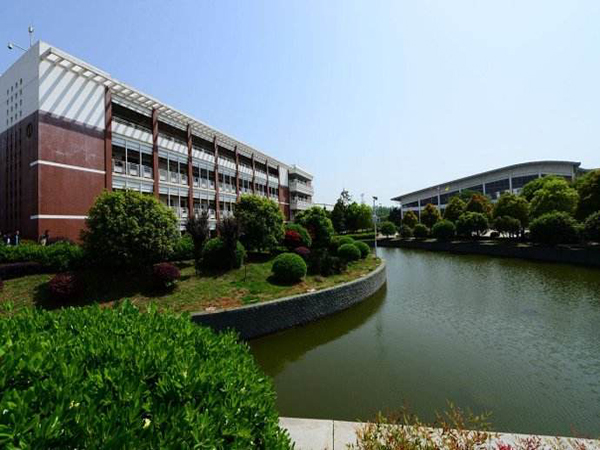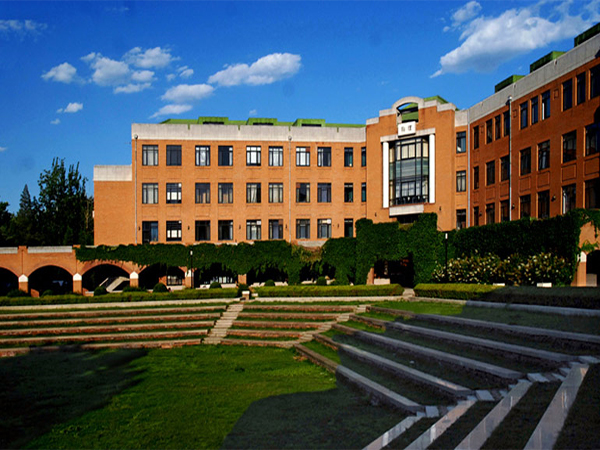Education plays a fundamental role in promoting social development, and China gives a priority to develop educational undertakings, in order to improve the quality of the whole nationality, develop civilization and accelerate the construction of the whole nation. For this, the education law in China specifies things related with education, education plicy, education system, school teaching, etc.
Education Policy
China implements a policy of nine-year compulsory education, which stipulates all children of school age must receive a nine-year education. First, parents, school and government shall work together and guarantee that all children of school age receive a nine-year education, which costs no tuition fee. Second, the nine-year education is compulsory, and every children has rights and obligations to receive a nine-year education. Third, schools mustn’t dismiss and expel students for whatever reasons. Fourth, to students with disabilities, schools mustn’t discriminate them, and special schools should be set up for them. For students who commit a heavy crime and got sentence, they should also receive education in special schools. This education policy has a fundamental goal that it should eliminate illiteracy, and improve education quality, and promote people’s lifelong learning.
Education System
Pre-school Education
China has pre-school education, primary education, secondary education, and higher education. In pre-school education, children must have three years’ education in kindergarten. Children enjoys playing with each other, learn to communicate and cooperate with partners, and learn living skills like learn to live and how to care themselves, and moral values like respecting others. Except these, children have other lessons for hobbies and skill development as long as they like. In nowadays, before the three-year preschool education, parents may send children to child-care centers when they have no time to look after children. Still, for an all-round personal development and versatility, parents may send children to interest-oriented classes and classes for skill development, like writing lesson, music class and dancing class.
Primary Education & Secondary Education
Primary education covers six years’ learning in a primary school, which has lessons about basic knowledge in several subjects, like math, Chinese, English, Science, P.E, music, and painting. In this phase, students first learn to read, write, and later learn some basic knowledge. Secondary education includes education in junior high school anda senior high school, and each lasts for three years. In this phase, two levels of school both have required courses and selective courses. The required courses are developed by education department, while selective courses could be different, developed by schools and teachers, and it may be varied according to students’ interests, school’s mission and social need. The nine-year education covers primary education and education in junior high school or middle school. Thus, whatever school achievement a student gets, he or she can enter into a junior high school. In a junior high school, required courses are Chinese, math, English, history, geography, moral education, ideology & political science, chemistry, music, painting, P.E. and so on, and it has many selective courses, which are oriented to personal interest, like piano course, tea course and taekwondo course. At the end of education in junior high school, students need to take the senior high school entrance examination for study in a senior high school.
Education in senior high school is farther in depth than education in senior high school, and it is also the important phase for preparations for higher education. It lasts for three years, and has the same required courses as that in education of senior high school, but the content of each subject is much more difficult, and most of those courses are within exam range of the National College Entrance Examination. In this phase, students learn Chinese, math, English, history, geography, ideology & political science, chemistry, In the second year, students usually select learning direction, between social science and natural science. Students learning social science mainly have courses of Chinese, English, math, social sciences which incorporate history, geography and ideology & political science, while students learning natural science mainly have courses of Chinese, English, math, natural sciences which incorporate physics, chemistry and biology. In the last year, there is one of the most important examinations in one’s life, the National College Entrance Examination which usually takes place on 7th and 8th, July. For this examination, students study hard and want to enter into first-tier universities. Except this examination, some students may apply overseas study. For students who want to study in America for a bachelor degree, they need to take the Advanced Placement exam, which usually takes up in May. State senior high schools usually charges a small amount of tuition fee, and a small part of state senior high schools do not charge tuition fee in some districts, but students need to pay a big bill for study in private schools, especially international high schools.
The National College Entrance Examination
The National College Entrance Examination is a selection test for the admission to college and universities, and set up by the Ministry of Education. The subjects of this examination are Chinese, English, math, history, geography, ideology & politics science, physics, chemistry, and biology, which would be different in different provinces and regions. In China, this exam in different provinces use different test papers. In 2017, five provinces and regions use test papers of their own, Beijing, Tianjin, Shanghai, Jiangsu, and Zhejiang. The national united test paper I is adopted by Henan, Hebei, Shanxi, and Jiangxi, and the national united test paper II is adopted by Qinghai, Tibet, Gansu, Guizhou, Inner Mongolia, Xinjiang, Ningxia, Jilin, Heilongjiang, Yunnan, Guangxi, and Liaoning. Other provinces and regions may adopt mixed test. This data may be changed according to education reform of the year.
The examination usually has four test papers for Chinese, English, math, social sciences which incorporate history, geography and ideology & political science, or natural sciences which incorporated physics, chemistry and biology, which is adopted by most provinces and regions. In Shanghai, the examination consists of six subjects, Chinese, English, math, and three subjects selected from natural sciences and social sciences by students. After the examination, every provinces and regions set score lines about the testing result of this exam according to their own conditions: the score lines for first-tier universities, second-tier universities, third –tier universities, and junior college.
Higher Education
Higher education refers studies in universities, colleges, and institutes. Universities have lots of majors, from popular ones to unpopular ones, from natural science to social science. And those majors are so small and specialized that a university has dozens of majors. For instance, in language field, it may have English major, Japanese major, Korean major, Spanish major, Germany major and so on. In China, universities of the first tier and second-tier usually set a four years’ study for a bachelor degree, and a two or three years’ study for a master degree, and a three years’ study for a doctor degree.
According to data released in July, 2017, China has 2914 higher education institutions, including 1342 universities, 265 independent colleges and 283 higher education institutions for adults. Moreover, there are higher vocational colleges, which are oriented to cultivate talents for specific vocations. Universities in China all are grouped into different categories, like first-tier universities, second-tier universities, third –tier universities, and junior college. Among universities, some universities are included into the lists of project 211 and project 985. Project 211 is to strengthen about 100 institutions of higher education as a national priority, and there are actually 112 universities listed in the project 211, which enjoy a fame in China for its education quality. Project 985 is to found world-class universities and it has 39 universities in total. Universities of project 211 and 985 are of good quality in education and have rich education resources. Almost every province has at least one 211 university. Some famous universities in China mainland are Peking University, Tsinghua University, Zhejiang University, Fudan University, Renmin University of China, Shanghai Jiao Tong University, Wuhan University, Nanjing University, Sun Yat-sen University and Huazhong University of Science and Technology. Tsinghua University is the most famous one, and enjoys a world fame, ranking within top 30 in world universities, and it is one of the universities that Chinese students want to go.
International Education
Overseas Chinese students. In 2017, China held its position as the biggest source market of overseas students, and the number of overseas Chinese students has reached over 0.6 million for the first time, with a rise of 11.74%. The number of overseas Chinese students having a study at their own expenses was about 0.54 million, accounting for 88.97 %. The number of overseas Chinese students who come back to China after the end of an overseas study was also increasing. To Chinese student, countries like America, UK, Canada, Australia are in the list of top countries for overseas study. As for majors, they are inclined to choose majors related with business, like finance, accounting, management science, and economics, and majors related with STEM, like engineering science, mathematics, computer science and physics.
Overseas study in China. The number of overseas students having a study in China amounted to about 0.49 million in 2017, marking China as the biggest target market of overseas students in Asia. From 2001 to 2017, the number of foreign students studying in China has grew from about 61 thousand to 489 thousand, and every year, it has a growth at about 10%. Those foreign students are mainly from South Korea, Thailand, Pakistan, America, India, Russia, Japan, Indonesia, Kazakhstan and Laos, and about 0.34 million of them choose to study in the east China, like Beijing, Shanghai, Jiangsu and Zhejiang, accounting for about 70%. As one of the strongest developing countries with a strong economy, China has great advantages to attract foreign students: affordable tuition, considerable scholarships, priorities on education and technology, modern facilities and profound Chinese culture.



